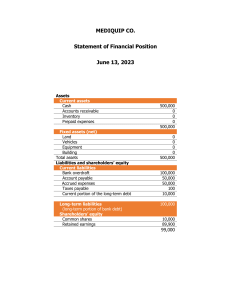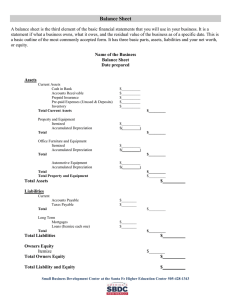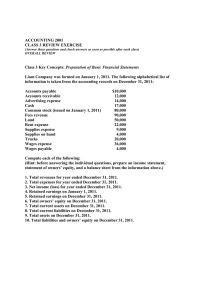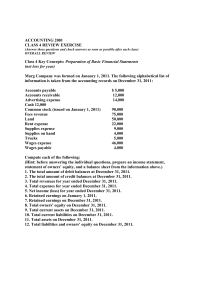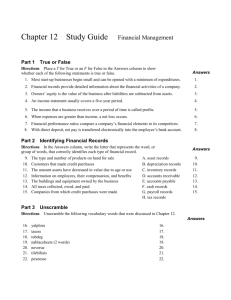Document
advertisement
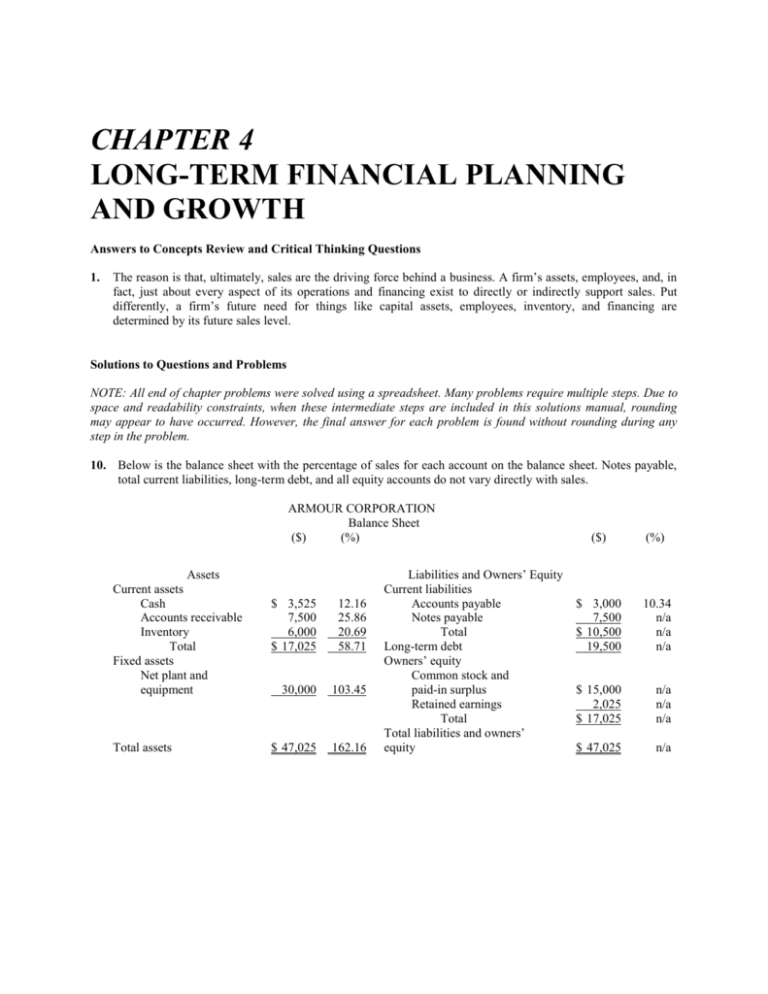
CHAPTER 4 LONG-TERM FINANCIAL PLANNING AND GROWTH Answers to Concepts Review and Critical Thinking Questions 1. The reason is that, ultimately, sales are the driving force behind a business. A firm’s assets, employees, and, in fact, just about every aspect of its operations and financing exist to directly or indirectly support sales. Put differently, a firm’s future need for things like capital assets, employees, inventory, and financing are determined by its future sales level. Solutions to Questions and Problems NOTE: All end of chapter problems were solved using a spreadsheet. Many problems require multiple steps. Due to space and readability constraints, when these intermediate steps are included in this solutions manual, rounding may appear to have occurred. However, the final answer for each problem is found without rounding during any step in the problem. 10. Below is the balance sheet with the percentage of sales for each account on the balance sheet. Notes payable, total current liabilities, long-term debt, and all equity accounts do not vary directly with sales. ARMOUR CORPORATION Balance Sheet ($) (%) Assets Current assets Cash Accounts receivable Inventory Total Fixed assets Net plant and equipment Total assets $ 3,525 7,500 6,000 $ 17,025 12.16 25.86 20.69 58.71 30,000 103.45 $ 47,025 162.16 Liabilities and Owners’ Equity Current liabilities Accounts payable Notes payable Total Long-term debt Owners’ equity Common stock and paid-in surplus Retained earnings Total Total liabilities and owners’ equity ($) (%) $ 3,000 7,500 $ 10,500 19,500 10.34 n/a n/a n/a $ 15,000 2,025 $ 17,025 n/a n/a n/a $ 47,025 n/a
